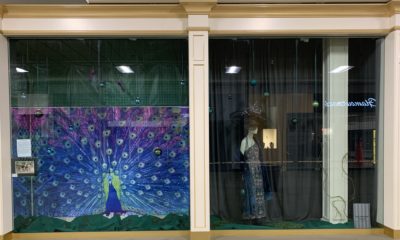I AM AN ARCHITECT. For the better part of the past 30 years, I have focused on the design and building of places and things. I have stood in some buildings and cried because they were so magnificent. I have been stopped and held motionless in places where my mouth was agape and words could not express the sense of awe I felt. I have walked by, looked past and disregarded buildings that become nothing more than texture to the environments I was in. I have been in places that have cradled me, lending warmth and comfort, and those whose austerity left me cold and feeling isolated, as though my presence was met with indifference. I have spent considerable time trying to understand why some buildings or environments stop me in my tracks and engage me, while others don’t capture any degree of my fascination. I love buildings and sometimes I also hate buildings, and there have been are many more that have not moved me either way.
Despite my love affair with my chosen profession, I find myself thinking more and more about the role of architecture in the creation of brand experiences. I have designed stores, museums, hotels, libraries and houses, and I know that we architects tend to focus on the details and, from time to time, forget that the observer/participant in buildings don’t see what we see. In fact, at times, I am convinced that much of what surrounds customers is completely off of their awareness radar.
You could argue that it is the gestalt, an organized whole that is perceived as more than the sum of its parts, that people feel as an experience of a place. You could say that it is the overall perception of place and the details aren’t that important. Then again, I tend to get into the details and see the intricacies of the component parts. But then I may be making the mistake assuming that everybody sees spaces as I am inclined to do.
Not discounting my genuine appreciation for how others may experience places, my belief is that people are not generally attuned to their environments. They often don’t take a moment to appreciate the scale, geometries, colors, light, textures, volumes, furniture, fixtures, equipment, materials, finishes and composition of the elements in space. They often look ahead, or down at their phones; they seldom look upwards. When teaching design courses, I would encourage my students to look up. There is a lot to discover above eye level. There is a whole world up there that many don’t take time to explore.
Still though, we face the inextricable fact that brand experiences take place in built environments, by a greater proportion than they do as solely digital experiences. In an interesting dichotomy, these built places are out of sync with the pace at which their participants are experiencing life in a digitally enabled world. What if architecture could change (and I don’t mean weathering) over time?
This does happen to some degree today with moveable partitions and photosensitive glass and sunshades that trace the sun throughout the day. But that is not what I am really talking about. Yes, there are “smart buildings” whose mechanical systems adapt to weather, and even individual users’ comfort levels. The Internet of Things (IoT) is allowing for integrated building systems to interact with individual users. For example, guests are able to turn hotel rooms into interactive, voice-activated spaces. Power Over Ethernet (POE), which allows a single cable to provide both data connection and electric power to devices, is changing the electrical components of buildings, circumventing fire codes and assigning each item plugged into an outlet its own IP address.
Advertisement
But in the end, the buildings themselves don’t change. So, again, what if buildings could change? What if we didn’t spend resources on intricate architecture that is possibly off of the perceptual awareness radar of its users, and began to look at how the digital experiences an emerging generation of users are exposed to could augment experiences in the built environment? What if the perception of a place could change as fluidly as a digitally enabled guest changes between apps, web sites and other digital experiences? What if customer-created digital content could transform environments?
What if we looked to “digitecture” to provide experiences that reflect the pace of change? Not digital architecture as in 3-D models used as a design tool, but a digitally immersive experience mixing with existing architecture. This is not throwing the baby out with the bath water. It isn’t saying we should stop building places. It is augmenting the “baby” by immersing it in flow of digital content – a bath of ones and zeros. Content created any place but used to augment a specific place.
The extraordinary ability for data to create captivating imagery that can be projected into an existing space has the ability to push architecture forward and keep it evolving in pace with the digitally enabled emerging guest. Architecture can’t change, whereas digital content can, moment by moment, creating microcapsules of experiences that, when seamed together, create a compelling overlay to existing architecture. Add sound, scents, tactile elements and other atmospheric qualities to the space and we move from 3-D visual to 4-D sensory experiences that deepen memory because they activate many more perceptual senses.
Because we have become so good at creating digital content and mapping it onto forms, we can use a simple four-sided room, a forest of trees or a bridge where the static comes alive with animations. If we didn’t have to build complex architectural environments, how would construction cost be impacted? Ok, so someone will ask, “Aren’t you just shifting funding from building a complex coffered ceiling and walls with trim and other details to the creation of digital content and projection devices?” The straight answer is yes, costs are being shifted from hard building costs to soft digital content costs.
The key factor of mind-shifting change here is that we need to move from a “Cap Ex” to “Op Ex” mentality. Long-term viability of making relevant spaces in a digital world will mean that we need to see brand experience environments as either hybrids of digital content with existing architecture or created, from the onset, as places of digital engagement. Seeing digital as the way we operate rather that simply as a capital expense is a necessary recalibration in brand experience place-making.
The advantage to this shift, in the long-term, is that environments can be used for multiple use cases. They can transform to meet the needs of multiple user groups or brands. The room can be a generator of return visits because it is an event and tends to play into the same mentality as pop-up environments that thrive on FOMO (Fear of Missing Out). The immersive digitally enabled environment is an activation opportunity, a destination location that attracts users.
Advertisement
Digital content can be projected into places and motion sensors can pick up movement of people so that they can interact directly with the surfaces onto which the content is mapped. This relatively simple approach to engagement works because there is a sense of empowerment that comes from the immediacy of cause and effect. The user moves an arm and the projection immediately reacts in real-time, no lag. This little cognitive handshake, a digital surface reacting to a human participant, is effective because it creates a relationship between the user and the thing. The two are communicating and since this faculty is deeply rooted in our DNA, we fall for it every time. It also taps into our deep sense of “making” as a biological imperative. Transforming our environment and bending it to our will is also embedded in our collective cultural genetics. Humans are indeed Homo Sapiens “Man the Wise” but also “Homo Faber” – i.e., ”Man the Maker.” Interactive digital environments provide guests with a sense of empowerment and the opportunity to play a role in the making of place.
When guests can make experience the long-lasting effects on memory and engagement are deeper because of their direct interaction rather than simply participating as a third-party observer of something made elsewhere and presented as a fait accompli. It is in this way that immersive digital experiences, “digitecture,” present opportunities to the designers and makers of brand engagement locations by allowing for the collaboration of guests and brands in the making of experiences that matter.

 Photo Gallery3 days ago
Photo Gallery3 days ago
 Headlines1 week ago
Headlines1 week ago
 Sector Spotlight2 weeks ago
Sector Spotlight2 weeks ago
 Headlines1 week ago
Headlines1 week ago
 Headlines4 days ago
Headlines4 days ago
 Headlines2 weeks ago
Headlines2 weeks ago
 Designer Dozen1 week ago
Designer Dozen1 week ago
 Headlines2 days ago
Headlines2 days ago




















